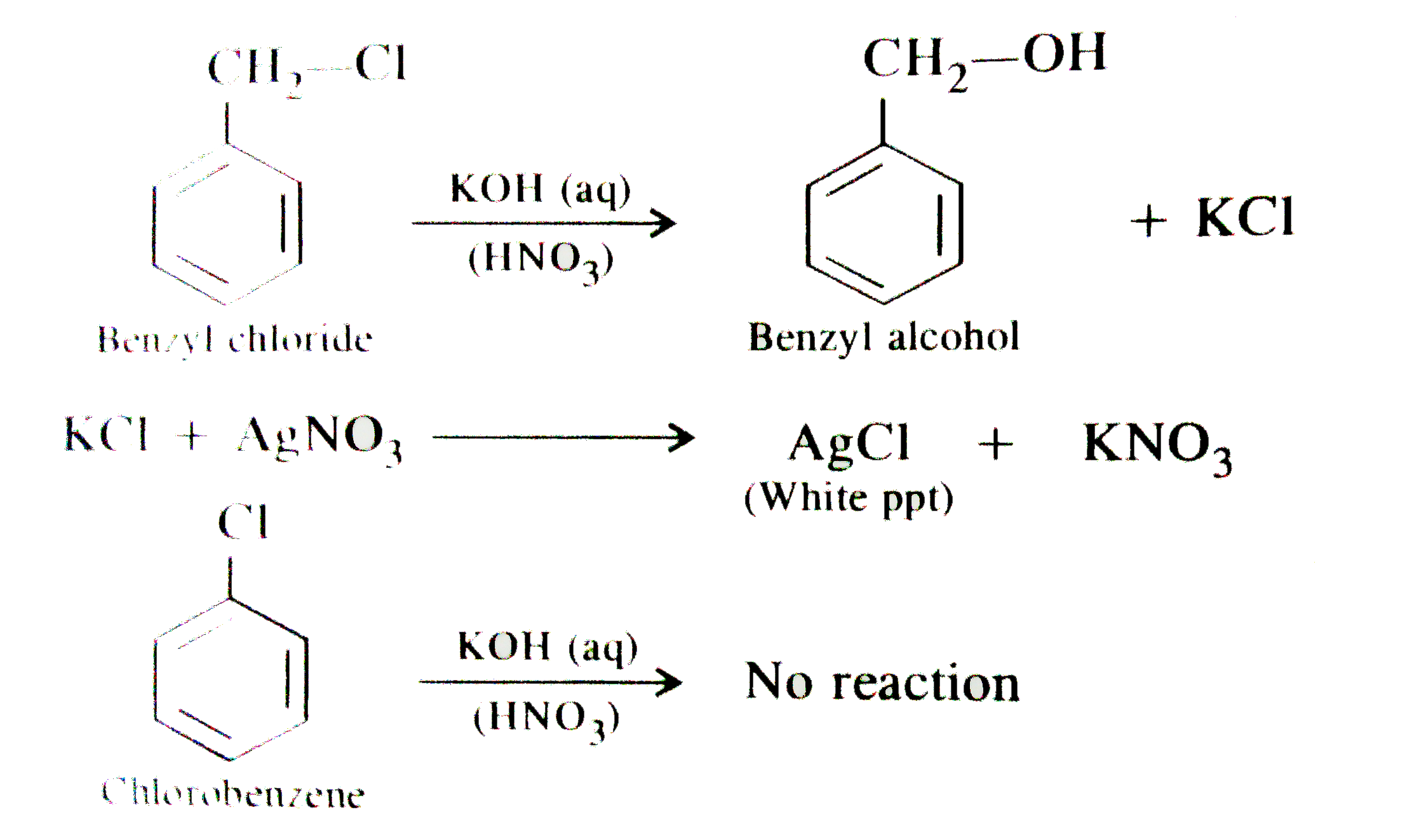when benzyl chloride is boiled with aqueous solution and the solution is acidified by a few drops of dilute followed by solution, a white precipitate is formed. However, no such precipitate is noticed when the reaction is carried with chlorobenzene. explain.
In case of , the benzyl carbocation formed by releasing ion is resonance stabilised. Therefore, the bond can cleave to form . However, the phenyl carbocation expected to be formed in case of chlorobenzene does not show any resonance. therefore, bond does not cleave in case of chlorobenzene and no white precipitate is formed in this case.

Topper's Solved these Questions
- BOOK - DINESH PUBLICATIONCHAPTER - ORGANIC CHEMISTRY - SOME BASIC PRINCIPLES & TECHNIOUESEXERCISE - N.C.E.R.T.40videos
ORGANIC CHEMISTRY - SOME BASIC PRINCIPLES & TECHNIOUES
- BOOK - DINESH PUBLICATIONCHAPTER - ORGANIC CHEMISTRY - SOME BASIC PRINCIPLES & TECHNIOUESEXERCISE - SHORT ANSWER TYPE QUESTION33videos
ORGANIC CHEMISTRY - SOME BASIC PRINCIPLES & TECHNIOUES
- BOOK - DINESH PUBLICATIONCHAPTER - NUCLEAR AND RADIO CHEMISTRYEXERCISE - Evaluate Yourself45videos
NUCLEAR AND RADIO CHEMISTRY
- BOOK - DINESH PUBLICATIONCHAPTER - P BLOCK ELEMENTS (GROUP 13 AND 14 )EXERCISE - Straight obj.17videos
P BLOCK ELEMENTS (GROUP 13 AND 14 )
Similar Questions
Knowledge Check
- Question 1 - Select One
AgNO3 solution will not give white precipitate with
A[Co(NH3)3Cl3]B[Co(NH3)4Cl2]ClC[Co(NH3)5Cl]Cl2D[Co(NH3)6]Cl3 - Question 2 - Select One
The solution of BiCl3 in dil. HCl when diluted with water , white precipitate is formed which is
ABismith oxychlorideBBismith oxideCBismith hydroxideDNone of the above - Question 3 - Select One
Aqueous solution of a salt when treated with AgNO3 solution gives a white precipitate , white dissolves in NH4OH. Radical present in the salt is
ACl−BS2−CI−DAll of them
Chlorobenzene and benzyl chloride can be distinguished by boiling with aqueous KOH followed by acidification with dil HNO3 and subsequent treatment with AgNO3 solution.
View SolutionWhen a small amount of HCl is added to an aqueous solution of BiCl3 , a white precipitate is formed. This is due to formation of
View SolutionThe metallic salt (XY) is soluble in water.
(a) When the aqueous soluble of (XY) is treated with NaOH solution, a white precipitate (A) is formed. In excess of NaOH solution, a white precipitate (A) is formed. In excess of NaOH solution, white precipitate (A) dissolves to form a compound (B). When this solution is boiled with soild NH4Cl, a precipitate of compound (C) is formed.
(b) An aqueous solution on treatment with BaCl2 solution gives a white precipitate (D) white is insoluble in conc HCl.
( c) The metallic salt (XY) forms a double salt (E) with potassium sulphate.
Identify (XY),(A),(B),(C),(D) and (E).View SolutionWhen a small amount of HCl is added to an aqueous solution of BiCl3, a white precipitate is formed. This is due to
View SolutionWhen a small amount of HCl is added to an aqueous solution of BiCl3 , a white precipitate is formed. This is due to formation of
View Solution

